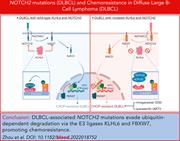Issue Archive
Table of Contents
BLOOD COMMENTARIES
HOW I TREAT
How I treat non-transfusion-dependent β-thalassemia
Saliba and colleagues use 4 illustrative cases to delineate diagnosis and treatment of non-transfusion-dependent β-thalassemia. The authors discuss their approach to diagnosis, the use of transfusion and novel agents including luspatercept, and the use of chelation therapy in iron overload. Throughout, they emphasize the management of organ-specific morbidity in this complex, multisystem disease.
CLINICAL TRIALS AND OBSERVATIONS
Final analysis of the CLL2-GIVe trial: obinutuzumab, ibrutinib, and venetoclax for untreated CLL with del(17p)/TP53mut
Clinical Trials & Observations
Huber et al report on the final results of a phase 2 study of obinutuzumab, ibrutinib, and venetoclax in 41 patients with previously untreated high-risk chronic lymphocytic leukemia (CLL) with del(17p) or TP53 mutation. Results in these high-risk patients were encouraging, with a 3-year progression-free survival of 79.9% and overall survival of 92.6%. This combination is a promising first-line treatment for patients with high-risk CLL.
LYMPHOID NEOPLASIA
DLBCL-associated NOTCH2 mutations escape ubiquitin-dependent degradation and promote chemoresistance
Up to 40% of patients with diffuse large B-cell lymphoma (DLBCL) relapse with chemoresistant disease. Zhou and colleagues report that inactivation of the E3 ubiquitin ligase KLHL6 promotes chemoresistance in DLBCL by preventing proteasomal degradation of NOTCH2. In addition, mutations in NOTCH2 can also prevent proteasomal degradation. NOTCH2 upregulates RAS signaling, and in vitro studies in chemoresistant cells suggest that cells with either KLHL6 inactivation or NOTCH mutation respond to nirogacestat, a γ-secretase inhibitor that blocks NOTCH signaling, in combination with the AKT inhibitor ipatasertib, which downregulates RAS signaling.
MYELOID NEOPLASIA
Paralog-specific signaling by IRAK1/4 maintains MyD88-independent functions in MDS/AML
Abnormal innate immune signaling in myelodysplastic syndromes and acute myeloid leukemia (MDS/AML) suggests a novel pathway for targeted therapy. The kinase IRAK4 has been implicated in immune dysregulation in MDS/AML but, despite encouraging early clinical trials, therapy with an IRAK 4 inhibitor appears insufficient as monotherapy. Bennett et al report that IRAK4 inhibition induces compensatory IRAK1 upregulation, limiting therapeutic efficacy; however, simultaneous targeting of both IRAK1 and IRAK4 results in greater suppression of leukemic stem cells in in vitro studies and in mouse xenografts.
TRANSPLANTATION
Antibody-mediated pathogenesis of chronic GVHD through DBY/HLA class II complexes and induction of a GVL effect
Chronic graft-versus-host disease (cGVHD) has many features resembling autoimmune diseases such as scleroderma. Alloantibodies against H-Y antigens, encoded on the Y chromosome, are a risk factor for cGVHD in female-into-male transplantation. Umino and colleagues investigated the link between these 2 observations and demonstrate that, although H-Y proteins are usually expressed only intracellularly, specific HLA class II alleles transport H-Y antigens to the endothelial cell surface and induce antibody production; these antibodies contribute to both cGVHD and the graft-versus-leukemia (GVL) effect.
LETTER TO BLOOD
BLOOD WORK
ERRATA
-
Cover Image
Cover Image
![issue cover]()
Wright-Giemsa–stained bone marrow from a male patient with HLA-DR–positive acute myeloid leukemia. Full-length DBY complexed with HLA class II was expressed not only on the affected organs of chronic graft-versus-host disease but also on some male HLA-DR–positive leukemic cells. See the article by Umino et al on page 1008.
- PDF Icon Front MatterFront Matter
- PDF Icon Table of ContentsTable of Contents
- PDF Icon Back MatterBack Matter
- PDF Icon Editorial BoardEditorial Board
Advertisement intended for health care professionals
Email alerts
Advertisement intended for health care professionals








CLL patients: GIVe me three!
Clinical Trials & Observations